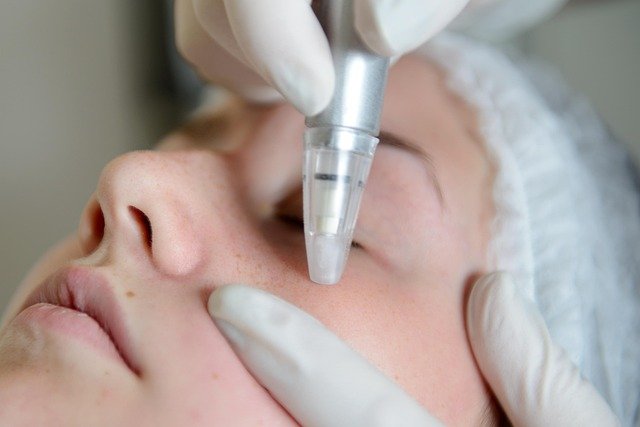Skin Renewal Essentials: Effective Rejuvenation Guide
Discover practical, professional approaches to skin rejuvenation that restore firmness, smooth fine lines, and refresh complexion. This guide explains laser options, non-invasive procedures, expected longevity, and potential side effects — plus cost ranges and maintenance tips to help you choose the right treatment and protect results with a smart skincare routine.

Revitalizing your skin involves selecting treatments that match your goals, skin type, and downtime tolerance. From aggressive laser resurfacing to gentle clinic facials, available options can reduce wrinkles, fade sun damage, and stimulate collagen for a fresher appearance. Below is a clear breakdown of common techniques, their benefits, expected durability, and safety considerations to help you make an informed decision.
Which laser treatments work best for rejuvenation?
Laser therapy is a cornerstone of modern skin rejuvenation because it can precisely target damage and trigger new collagen formation. Ablative lasers — notably CO2 and Erbium YAG — remove the epidermis and part of the dermis, promoting significant tissue remodeling. These are most effective for deeper lines, stubborn acne scarring, and pronounced sun damage, but they require longer healing periods and careful aftercare.
Non-ablative lasers such as Fraxel and Nd:YAG heat deeper layers of skin without stripping the surface. They offer milder improvement per session but involve shorter recovery times and lower immediate risks. Non-ablative devices are often chosen for improving texture, reducing pigment irregularities, and inducing gradual tightening across multiple sessions. Your clinician will recommend a laser type based on skin tone, the nature of your concerns, and how much downtime you can accept.
Advantages of non-invasive facial treatments
Non-surgical procedures provide meaningful enhancements while minimizing interruption to daily life. Common non-invasive options include microdermabrasion, chemical peels, and hydrafacials. Microdermabrasion exfoliates dead surface cells to brighten and smooth skin, chemical peels use controlled acids to resurface and even tone, and hydrafacials combine cleansing, exfoliation, extraction, and hydration in a single session.
These treatments typically need little to no downtime, are repeatable, and can be tailored to various skin types. Performed regularly and paired with a consistent home regimen, they help maintain improvements over time and can prevent or delay more invasive procedures.
How long do results last?
Duration of benefit depends on treatment intensity and individual factors. Aggressive procedures like deep laser resurfacing can produce dramatic, long-lasting changes that may persist for several years, especially when sun exposure is controlled. Less intensive treatments deliver more modest gains that often require maintenance sessions every few months to sustain appearance.
Individual variables such as age, genetics, skin type, lifestyle (including smoking and sun protection), and adherence to a proper skincare routine also strongly influence how long results remain visible. Combining treatments and following clinician recommendations for maintenance typically yields the most durable outcome.
Risks and side effects to consider
Most rejuvenation options are safe when performed by trained professionals, but risks exist. Short-term effects commonly include redness, swelling, sensitivity, and mild discomfort. More intensive therapies can lead to longer healing times and temporary changes in sensation. Rare but possible complications include infection, scarring, and shifts in pigment (hyperpigmentation or hypopigmentation), which are more likely in darker skin tones or with improper aftercare.
A thorough consultation should review your medical history, medications, and realistic expectations. Following pre- and post-procedure instructions reduces the chance of problems and speeds recovery.
| Treatment Type | Provider | Key Features | Cost Estimation |
|---|---|---|---|
| Laser Resurfacing | Dermatology Clinics | Targets deep wrinkles and scars | $1,000 - $3,000 per session |
| Chemical Peels | Med Spas | Improves skin texture and tone | $100 - $600 per session |
| Microdermabrasion | Beauty Salons | Exfoliates and rejuvenates skin | $75 - $200 per session |
| Hydrafacial | Skincare Centers | Cleanses, exfoliates, and hydrates | $150 - $300 per session |
| LED Light Therapy | Wellness Centers | Stimulates collagen production | $50 - $150 per session |
Prices, rates, or cost estimates mentioned in this article are based on the latest available information but may change over time. Independent research is advised before making financial decisions.
Choosing the right approach
Selecting a treatment requires balancing results, safety, budget, and recovery time. For deep wrinkles and severe textural issues, ablative lasers deliver the most dramatic correction but need a committed recovery plan. If you prefer minimal interruption, non-ablative lasers and in-office facials with regular maintenance can provide steady improvement with fewer risks.
A combined strategy often works best: professional treatments (for example, a series of non-ablative laser sessions or occasional peels) paired with at-home medical-grade skincare to support collagen and protect from UV damage. Your practitioner can design a program that sequences therapies and schedules maintenance visits for lasting benefit.
Final considerations and aftercare
Protecting treated skin is essential. Use broad-spectrum sunscreen daily, follow prescribed topical regimens, and avoid excessive sun exposure during healing. Report any unusual signs — such as severe pain, spreading redness, or pus — to your provider immediately.
Deciding on skin rejuvenation is a personal choice. A qualified skincare professional will evaluate your skin, discuss realistic outcomes, and outline potential side effects and recovery expectations. Many patients find combining methods and sustaining a consistent skincare routine produces the most satisfying, long-term results.
This article is for informational purposes only and should not be considered medical advice. Please consult a qualified healthcare professional for personalized guidance and treatment.






